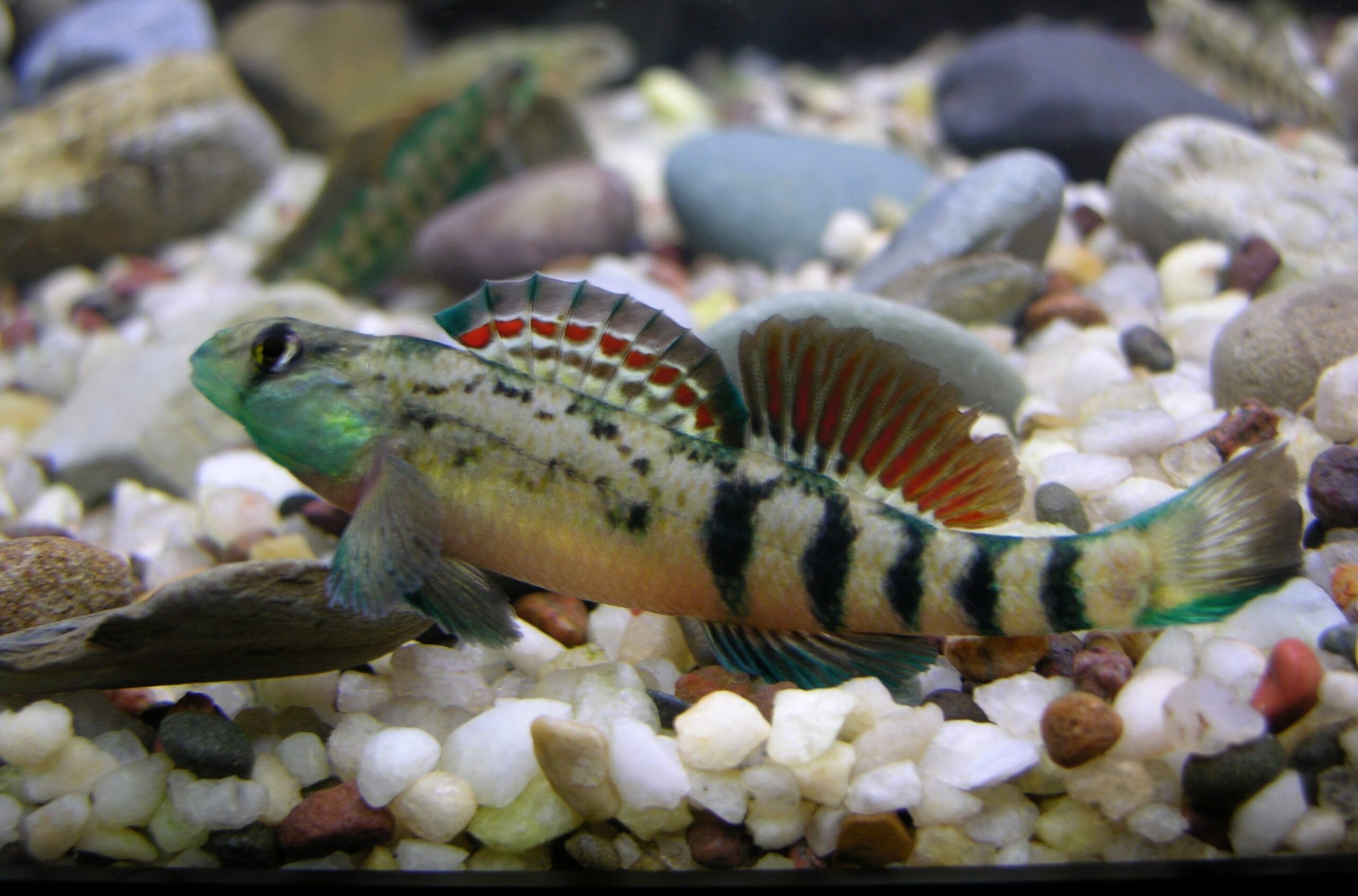“Males are showy, females are choosy” has been the accepted paradigm in sexual selection research for decades. By extension, scientists expect females to carefully select members of their own species as mates over individuals of very similar, recently diverged species. Males are believed to be much less discriminating. However, new research in Evolution by Tamra Mendelson, professor of biological sciences at UMBC, and colleagues suggests the opposite.
The research team, which included Mendelson, UMBC graduate students, postdocs, and a small army of undergraduates, tested the mate preferences of 15 to 20 pairs of 14 species of darters, a group of small freshwater fish, over six years. “We started with very closely related species and moved out, so it’s as if we tracked the beginning stages of the evolution of differences, before speciation is complete,” Mendelson says.
Testing species pairs that are still extremely genetically similar mimics recent species divergence. In those situations, neither sex had a significant preference. In pairs with greater genetic differences, only males preferred conspecific mates, choosing the conspecific female more often even when the two females were still very similar. Females only showed a very weak preference, and only when the two males were most different.
The study challenges the established paradigm, which is most likely biased by the concentration of major universities in temperate climates, where the classic pattern of showy males and drab females is prevalent. In the tropics, however, both sexes tend to be showy. With temperate species getting the bulk of research attention, “The scientific community thinks that the way this works is that females prefer the bells and whistles of their own species, and that’s how species stay apart,” Mendelson says. “And our research contradicts that.”
Many of the study trials took place in Mendelson’s lab using a standard, but unnatural, experimental setup, but others conducted by Michael Martin, Ph.D. ’16, biological sciences, occurred in artificial streams at UMBC’s greenhouses and corroborated the findings in a more natural environment. Patrick Ciccotto, Ph.D. ’14, biological sciences, and Jennifer Gumm, a former UMBC postdoctoral fellow, are the other authors.
Mendelson says that in the past, scientists also assumed females were choosier than males because the energetic cost of producing eggs is so much higher than producing sperm. However, that argument ignores the cost of direct competition with other males and growing and maintaining showy ornaments, which may also put males at greater risk of predation.
“That theory is just missing an entire aspect,” Mendelson says. “Really? Males never care? A bull will mate with a wolf? At what point are we willing to say the male mind matters?” Now, she says, “There’s a growing push to say, ‘Wait a minute, males may be choosy.’” The new findings should help buoy that idea to greater prominence in the field and inspire further research, because while Mendelson’s data were noisy, the results emerged clearly when the team examined the data set as a whole. Mendelson describes the results as “flecks of gold in a glob of dirt.”
Because female darters lack elaborate ornaments, the question now is, “Given that females are so similar to each other, what are males paying attention to?” One hypothesis is that males notice the scale patterns on females, which are similar to males’ except in mottled browns and grays rather than bright colors. The Mendelson lab members will tackle this question on their next quest for gold.
Mendelson also predicts that the new finding will translate to other animals with showy males and drab females. “Just because one of the sexes has bells and whistles doesn’t mean that that sex is not paying attention to the traits of the other sex,” she says. “We see them as bells and whistles, but they may not be the differences that actually keep species from mating with each other.”
Image: An example of a colorful male darter. Photo by Vance Imhoff.

